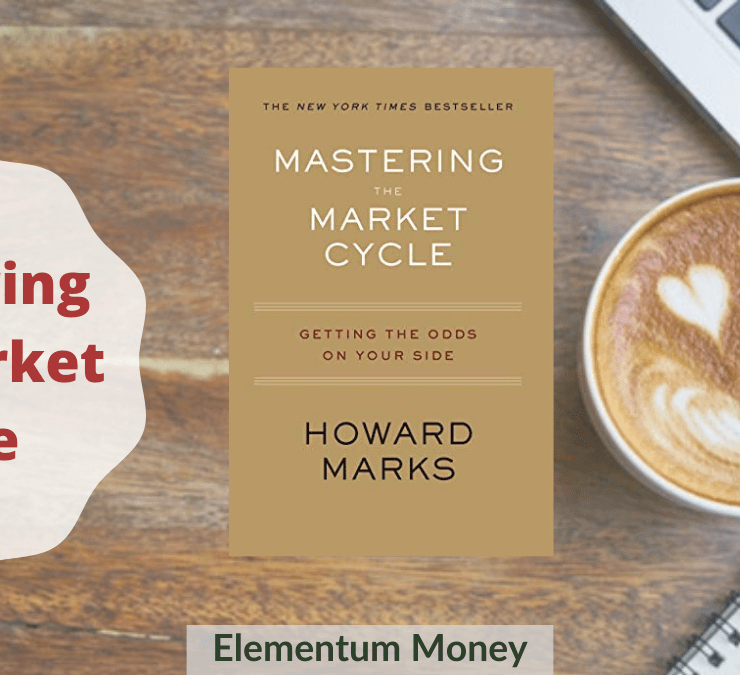
When asked who’s the world’s greatest and best-known investor, the answer is mostly unanimous with the name of Warren Buffet. However, when Warren Buffet acknowledges someone as his mentor and from whom he has learned the basics of value investing, you know you really need to sit up and pay attention.
You might have already guessed that I am talking about Benjamin Graham and the classic book written by him – The Intelligent Investor. The first edition of the book was published in 1949 with frequent updates done by Graham to reflect the market situation.
In this post I am going to list down the learnings from is a 2003 version of the book wherein for every chapter, it takes the original content from the last revised edition published in 1973, followed by a commentary by Jason Zweig, writer of the column “Intelligent Investor” at Wall Street Journal.
Considering the book is jam-packed with valuable insights, I have decided to tackle it in 2 parts, with the second part being covered in the next Book Club post, 2 weeks on.
A lot of the detailing and examples, especially with respect to bonds, held true better for the US market. As such, the learnings that I am covering in these two posts are the universal ones which can be used by an investor in any market. The text that you see in italics are direct quotes from the book.
- Graham defines investing as: An investment operation is one which, upon thorough analysis, promises safety of principal and an adequate return.
- Graham classifies investors into two types on the basis of their risk profile as well as the mindset – Defensive or Active. As he says – The art of investment has one characteristic that is not generally appreciated. A creditable, if unspectacular result can be achieved by the lay investor with a minimum of effort and capability; but to improve this easily attainable standard requires much application and more than a trace of wisdom. He recommends that an investor be very certain of the type of investing s/he is looking at as there is no worthwhile middle path here. As per him, a 50-50 portfolio of stocks and bonds is ideal though according to the type of investor, stock allocation can be reduced to 25{76b947d7ef5b3424fa3b69da76ad2c33c34408872c6cc7893e56cc055d3cd886} or raised to 75{76b947d7ef5b3424fa3b69da76ad2c33c34408872c6cc7893e56cc055d3cd886}.
- Some basic speculation goes into stock investing by everyone. However, Graham details out traits of what can be easily called unintelligent speculation – 1. Speculating when you think you are investing 2. Speculating seriously instead of a pastime without adequate knowledge 3. Risking more money in speculation than you can afford to lose, especially margin investing. On the other hand, Jason Zweig makes the difference between investing and speculation very clear with – People who invest make money for themselves; people who speculate make money for their brokers
- Do not fall for stocks promising a high return very quickly – The investor cannot hope for better than average results by buying new offerings, or “hot” issues of any sort, meaning thereby those recommended for a quick profit.
- 4 rules for common stocks for the defensive investor – 1. Adequate but not excessive diversification – 10 – 30 stocks. 2. Each company should be large, prominent and conservatively financed 3. Each company should have a record of continuous dividend payment (at least 10 years as mentioned by Jason Zweig) 4. Price to be paid less than 25 P/E of average earnings and 20 times P/E of TTM.
- It is good to remember the difference between notional and realized loss. Even if the market price of a stock falls, unless you are forced to sell, you haven’t really incurred a loss. Graham says – The idea of risk is often extended to apply to a possible decline in the price of a security, even though the decline may be of a cyclical and temporary nature and even though the holder is unlikely to be forced to sell at such times.
- IPOs or Initial Public Offerings are victims of especially aggressive marketing and salesmanship with most new issues being sold under favorable market conditions. You must test them under much more rigorous conditions.
- Jason Zweig cautions against the mantra of – Familiarity breeds complacency. As per Zweig, The more familiar a stock is, the more likely it is to turn a defensive investor into a lazy one who thinks there’s no need to do any homework. He warns the reader against taking Peter Lynch’s advice of invest in what you know at face value and ignoring the follow-up advice about understanding the working and the numbers behind it. Another example of this mantra taking people down is when employees put ALL their retirement savings in their employers’ stock. There are a lot of stories of employees losing all their retirement corpus, once their employer went bust, like Enron.
- As per Jason Zweig, Dollar Cost Averaging or putting in a fixed amount of money in the markets every month, like a Systematic Investment Plan works because By putting every investment decision on auto-pilot, you drop any self-delusion that you know where stocks are headed, and you take away the market’s power to upset you no matter how bizarrely it bounces.
- 4 types of market strategies for the enterprising investor:
- Buying in low markets and selling in high markets – While this sounds rational and easy, market’s actions in 20 years have not made it easy to predict which way it is going to swing. It would require a special talent or “feel” for the way the market shall swing
- Buying carefully chosen “growth stocks” – This strategy looks at companies that have done better than the market average in the past and are expected to do so in the future. There are two catches in this strategy – such stocks are over-priced and may not fare well because of paying full price for the prospect. Past performance is no indication of future performance. The growth curve more often than not flattens out and often turns downwards. As Graham puts it This (Growth stocks market) is one in which the excellent prospects are fully recognized in the market and already reflected in a current price earnings ratio of, say higher than 20.
- Buying bargain issues of various types – There are two types of bargain issues, one being the relatively unpopular large company and the second being a company with higher future earnings. For the first one, Graham says – We think that a group of large companies that are relatively unpopular, and therefore obtainable at reasonable earnings multipliers, offers a sound if unspectacular area of choice by the general public. Large companies are also better suited since they have all the necessary resources to ride out of an uncertainty. For the second type of bargain issue, if the expected future earnings multiplied by a factor are still much lower than the market price, then it is a bargain for sure. Bargains are easily identifiable -> It can either be a large company selling well below both it’s past average price and past average price/earnings multiplier or a stock with its price being lower than net working capital alone, after deducting all prior obligations.
- Buying into special situations: Special situations are ones which Graham recommends only for professionals who have enough access to companies to recognize those special situations in good time.
- The Mr. Market parable – one of the most memorable parts of the book is the parable around Mr. Market. Anyone who understands the depths of that parable would be banishing the fear of market fluctuations from his head forever. To put it simply, Graham asks you to imagine being a partner in a company with a stake worth $1000. Mr. Market is a partner in that company and every day, in fact, every minute he tells you what he thinks your stake is worth. Now, Mr. Market is one moody emotional fellow. Sometimes in his enthusiasm, he tells you its’ worth $2000 whereas at times, being morose he tells you it’s worth $200. You would ideally mind your own business and know the right time to really listen to him. That is how you should treat the market ticker as well and see beyond its moodiness at the quality of the underlying company.
Phew! These are selected learnings from just half the book. Now, you can well imagine why it’s still considered an investing classic. The book itself is loaded with examples which make understanding these points much easier. Stay tuned for the second part of this book in two weeks’ time.
Any views or opinions, let me know in the comments below or email it to me at aparna@elementummoney.com





Leave a Reply